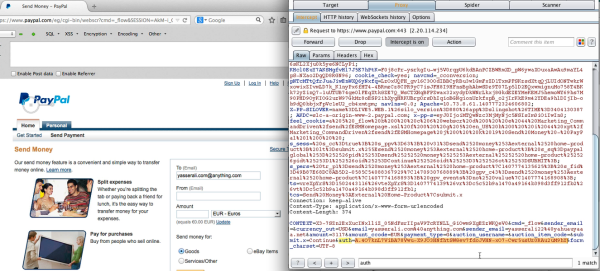The computer security industry has made many positive changes since the early days of computing. One thing that seems to be catching on with bigger tech companies is bug bounty programs. PayPal offers such a program and [Yasser] decided to throw his hat in the ring and see if he could find any juicy vulnerabilities. His curiosity paid off big time.
Paypal is a huge player in the payment processing world, but that doesn’t mean they aren’t without their flaws. Sometimes the bigger the target, the more difficult it is to find problems. [Yasser] wanted to experiment with a cross-site request forgery attack. This type of attack typically requires the attacker to trick the victim into clicking a malicious link. The link would then impersonate the victim and make requests on the victim’s behalf. This is only made possible if the victim is logged into the target website.
PayPal has protection mechanisms in place to prevent this kind of thing, but [Yasser] found a loophole. When a user logs in to make a request, PayPal gives them an authentication token. This token is supposed to be valid for one user and one request only. Through experimentation, [Yasser] discovered a way to obtain a sort of “skeleton key” auth token. The attacker can attempt to initiate a payment transfer without first logging in to any PayPal account. Once the transfer is attempted, PayPal will request the user to authenticate. This process produces an auth token that apparently works for multiple requests from any user. It renders the authentication token almost entirely ineffective.
Once the attacker has a “universal auth token”, he can trick the victim into visiting a malicious web page. If the user is logged into their PayPal account at the time, the attacker’s webpage can use the universal auth token to trick the victim’s computer into making many different PayPal requests. Examples include adding email addresses to the account, changing the answers to security questions, and more. All of this can be done simply by tricking the user into clicking on a single link. Pretty scary.
[Yasser] was responsible with his disclosure, of course. He reported the bug to PayPal and reports that it was fixed promptly. It’s always great to see big companies like PayPal promoting responsible disclosure and rewarding it rather than calling the lawyers. Be sure to catch a video demonstration of the hack below. Continue reading “Hacking PayPal Accounts With CSRF”











